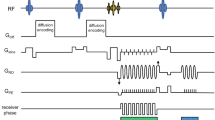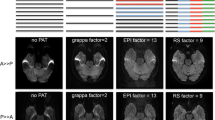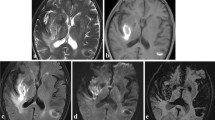Abstract.
The aim of our study was to compare gradient-spin-echo (GRASE) to fast-spin-echo (FSE) sequences for fast T2-weighted MR imaging of the brain. Thirty-one patients with high-signal-intensity lesions on T2-weighted images were examined on a 1.5-T MR system. The FSE and GRASE sequences with identical sequence parameters were obtained and compared side by side. Image assessment criteria included lesion conspicuity, contrast between different types of normal tissue, and image artifacts. In addition, signal-to-noise, contrast-to-noise, and contrast ratios and were determined. The FSE technique demonstrated more lesions than GRASE and with generally better conspicuity. Smaller lesions in particular were better demonstrated on FSE because of lower image noise and slightly weaker image artifacts. Gray–white differentiation was better on FSE. Ferritin and hemosiderin depositions appeared darker on GRASE, which resulted in better contrast. Fatty tissue was less bright on GRASE. With current standard hardware equipment, the FSE technique seems preferable to GRASE for fast T2-weighted routine MR imaging of the brain. For the assessment of hemosiderin or ferritin depositions, GRASE might be considered.
Similar content being viewed by others
Author information
Authors and Affiliations
Additional information
Received 14 April 1997; Accepted 8 August 1997
Rights and permissions
About this article
Cite this article
Umek, W., Ba-Ssalamah, A., Prokesch, R. et al. Imaging of the brain using the fast-spin-echo and gradient-spin-echo techniques. Eur Radiol 8, 409–415 (1998). https://doi.org/10.1007/s003300050402
Issue Date:
DOI: https://doi.org/10.1007/s003300050402




